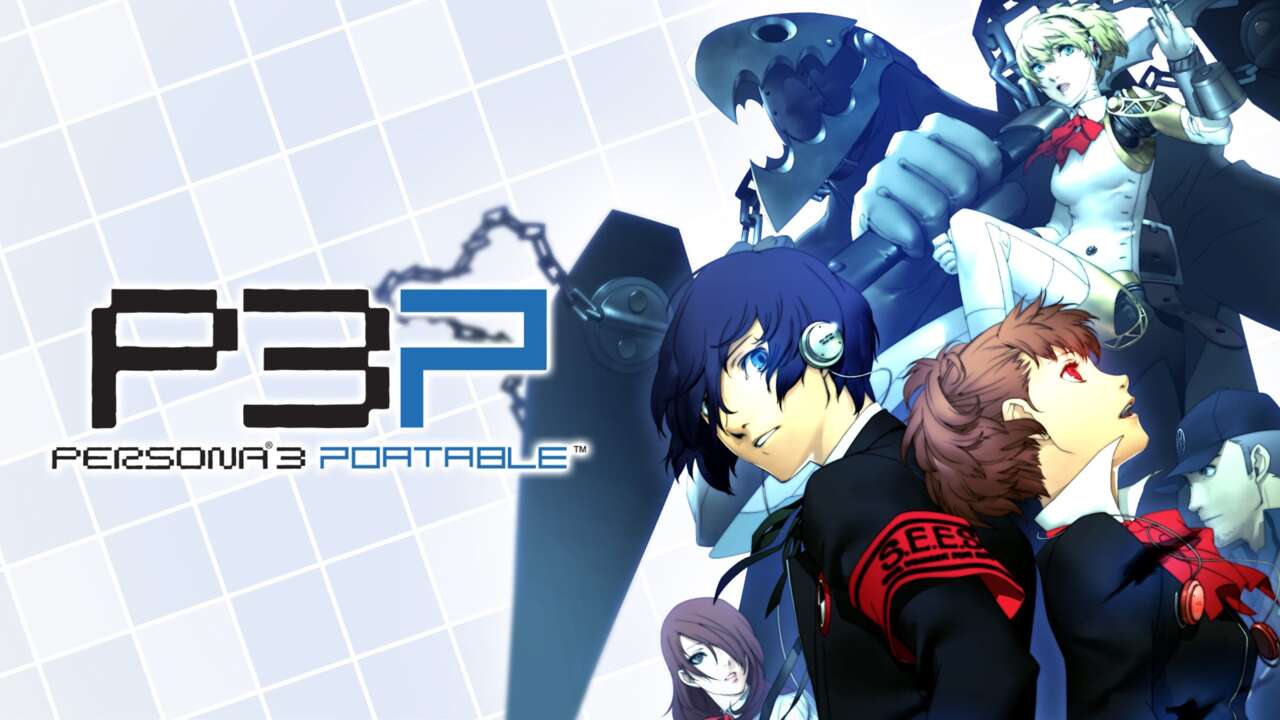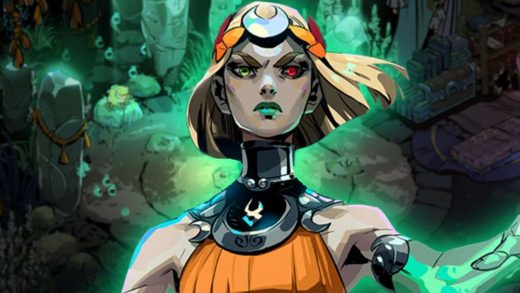
This review of Persona 3 on PS2 has been updated to include a review of Persona 3 Portable, which was re-released on Xbox platforms and PC. The original review was written by Kevin VanOrd, while the re-release was written by Jessica Howard.
The PlayStation 2 may have reached its twilight years, but there is no shortage of great games being released for it. Enter Persona 3, the latest in the Shin Megami Tensei series to reach American shores. Luckily, you won’t need any previous experience with the Persona franchise to appreciate its uniquely dark sensibilities, though series fans will find plenty of familiar references in which to revel. This is a quality role-playing experience that weaves distinctive gameplay elements into a fascinating story that unfolds slowly but keeps you constantly guessing. It’s also atypically mature, but then again, any game that features your party members repeatedly shooting themselves in the head isn’t for the squeamish. Indeed, the game’s signature mechanic is this: To summon your inner self–or persona–you point a pistol at your head and pull the trigger.
At the outset of the game, you name your character, who has just transferred to Gekkoukan high school. But it’s clear that not everything is kosher at the seemingly average campus. Mysterious creatures called shadows are threatening the locals, spreading an enigmatic disease called apathy syndrome that leaves their victims as listless as the name implies. However, their activity is generally confined to the dark hour: an hour sandwiched between midnight and 1 a.m. Most people are oblivious to this hour, while others are distinctly aware of the creepy dark hour in which the undulating gloom seals most of humanity in gothic coffins. Those unseemly heroes are in touch with their personas, which can be summoned to fight shadows in the realm of Tartarus, where most of them are restricted. At Gekkoukan, known persona users have created the Specialized Extracurricular Execution Squad and are determined to wipe the shadows off the face of the earth.
Saving humanity isn’t a new concept, but you’d be wrong to assume that Persona 3 is limited to such a pat description. Instead, the gruesome nature of the dark hour is offset nicely by Persona 3’s more traditional boarding school setup, in which your character attends classes, plays sports, and joins the student council. You have the opportunity to establish a good number of relationships with many of the inhabitants of the gameworld, from a love-struck classmate to the injured kendo team captain. Each of these inhabitants has a story of his or her own, and you will find yourself feeling involved with their struggles, no matter how seemingly insignificant. However, your school day meandering and extracurricular activities are more than just contrasting gameplay: How you spend your time here directly affects your combat performance during the dark hour.
This occurs in one of two ways. The more obvious way is to increase your stats by performing activities that directly affect them. For example, studying before bed or at the library will increase your academics, while watching chick flicks at the local theater increases your charm. The other aspect of your school day is your burgeoning relationships. The friendships and romances you build directly affect the personas that you summon in battle because each persona is strengthened by the associated social link. For example, a prospering friendship will earn you the blessing of the magician arcane, which means all personas associated with that arcana will benefit. But you have limited time each day to pursue those interests, so you need to spend your time wisely and concentrate on the activities that build a character that best suits your gameplay style.
Once you’ve finished tooling around school and town during the day, it’s off to Tartarus for the dark hour, though you aren’t forced to head there most nights, if you’d rather study or rest up instead. Tartarus is essentially a multistory skyscraper in which you climb from one floor to the next, defeating enemies as you gradually level up to handle the foes on floors above. You can take up to three other party members who have various strengths and weaknesses with you, yet unlike in most other role-playing games, you have no direct control over them. However, you can set up general tactics for each one if you like, such as support/healing. This may seem limiting at first, but as you earn more and more personas for your own character, you’ll find that it’s intimidating enough handling them all without adding three others to the mix.
You’ve got standard weaponry handily doled out by a sympathetic cop, but the bread and butter of your turn-based battles are the personas themselves. Each one brings with it any number of skills, and to use them, you first need to activate that particular persona. Once you have the right one in place, you select the spell to use, choose your enemy, and shoot yourself in the head. Granted, it’s not a real pistol you use but an instrument called an evoker. Still, you can see shards of your soul flying from your head every time, and it’s as macabre at the end of the game’s 50 hours as it is the first time you do it. Most foes have a particular weakness that can be exploited with a particular persona skill or a critical hit from your standard weapon. Most of the time, hitting an enemy’s weak point in this manner knocks it down and earns you an additional turn. If you manage to knock down every enemy, you can then activate an all-out attack, which sends your party into a hysterical-looking, cartoonlike skirmish, complete with comic book “thwaps” and “bams.”
You will initially find new personas as loot, though after-battle goodies are handled differently than in most RPGs. In Persona 3, you choose from multiple potential rewards, which are shown onscreen as cards and then shuffled Three-card Monte style. This allows you to choose the one you want as long as you paid close attention to where the desired card ended up. But once you earn a couple personas, you are able to fuse them together by making a trip to the velvet room. The velvet room is presided over by a mysterious old man and friendly young woman; its existence is one of the game’s many secrets. But once inside, you can combine two or three personas into a brand-new one of much higher level. There is a bit of mystery to this process because you don’t necessarily know exactly what spells this new persona will brandish, but it will generally be a big improvement over the lost ones. Still, there is always a risk when fusing personas. For example, one of your personas may be your only source of an important healing spell, and you won’t know exactly what abilities a persona brings to the table before fusing it.
Fusing personas and developing their linked relationships can be an intricate affair. However, Persona 3 is somewhat simple at its core, and you may find that the game’s main structure a little tedious. You’ll spend the day increasing skills and developing relationships, the pace of which is halted by frequent loading times, then return to the dorm to set up the night’s foray into the dark hour. The hallways of Tartarus also get monotonous because each hallway ends up looking more or less the same. Thankfully, the occasional repetition is broken up by multiple story elements that get you into combat away from Tartarus. Yet there is a certain amount of grinding inherent to the game because each section of Tartarus is broken up by a boss character that must be defeated to move forward. If you aren’t strong enough to handle it, you will need to revisit floors you’ve already explored countless times until you can manage. In fact, you’ll need to backtrack a lot as it is because you cannot just enter on any floor but only on floors you’ve managed to climb to and activate a portal. This often means that you’ll be running through the same floors multiple times until you’ve reached the next level with a portal to activate.
Most of the game’s other annoyances are simple things that could have been avoided. You can gain the upper hand on the enemies that wander about by attacking them first to initiate the battle, which requires a well-timed button press. However, with your whole party squeezed together, it’s easy to select one of them instead, which throws off the timing and tosses you into a battle in which the enemy has the upper hand. Additionally, you cannot cycle through your party’s inventory very easily because you are required to walk up to each one and swap out any armor or weapons. It’s made doubly silly by the fact that you are all clumped together, so it’s easy to select the wrong party member. This would have been alleviated by the standard setup in which you can just enter your own inventory and cycle through the party from there.
Persona 3 looks fantastic and is dripping with flair, from character models to monster designs. Battles are the definite highlight here, from each member’s personal manner of pointing the evoker to the imposing personas themselves. The school portions are equally nice to look out, thanks to subtle, expressive animation that brings you even closer to the characters that drive the narrative. Also of note are the incredible anime cutscenes that set the dark tone for the chilling events that inevitably follow. The sound is almost as equally well done, with plenty of loud, eerie sound effects and solid voice acting. The soundtrack is outstanding, with a mix of ghostly chords and Japanese pop tunes that feel just right in the moments they’re used.
Persona 3 is a game you will remember, if not for the complex characters or intriguing story, then most certainly for the endlessly shocking pseudo suicides you’re subjected to time and time again. Some of the initial intricacy gives way to tedium over time, but this is an undoubtedly great game that is both darkly envisioned and slickly executed. The fact that it manages to stand out in an overflowing crowd of RPGs on the PS2 is no mean feat, and if you appreciate a smart story, it will be an excellent addition to your library.

Persona 3 Portable Review
Following the explosive popularity of Persona 4 Golden and Persona 5 Royal in the West, many Persona newcomers have longed for a way to easily play their moody predecessor, Persona 3. Thankfully, Atlus has now released Persona 3 Portable on modern consoles, allowing more players than ever before to experience it. As it turns out, this story is one well-worth experiencing, as it is arguably the most profound in the series. While Persona 3 Portable might lack the polish of its successors, it retains the series’ signature gameplay, compelling stories, social commentary, and stylish nature Persona fans have come to know and love.
Persona 3’s story begins with the introduction of the Dark Hour, a period of time that exists just after midnight and cannot be perceived by the average human. During the Dark Hour, a dungeon called Tartarus appears and unleashes shadow monsters that plague the real world by inflicting a condition known as Apathy Syndrome, an illness that causes those who have it to become despondent. Naturally, this is where you come in.
In Persona 3, you play a high school student who is recruited to fight alongside a group of exceptional teens to take down these shadow creatures and the mysterious forces behind society’s collapse. You do this by using personas: powerful manifestations of the self who possess magical powers and can only be summoned during the Dark Hour. Though this premise is already enticing, the game also has a second component: When you’re not fending off fiends in Tartarus, you must carefully manage your time as an everyday high school student striving to ace your final exams, make friends, and perhaps even find love. Both parts of the game have a direct impact on one another, as when you interact with people and raise your social links, you and your persona grow stronger. Conversely, when you explore dungeons, rescue civilians, and unveil the mystery of the Dark Hour, you get to see the consequences for your actions unravel in the real world.
Those familiar with the Persona series will feel right at home with Persona 3’s turn-based combat system. Once in battle, you are given the ability to control either one or all of your party members as you aim to exploit your enemies’ weaknesses and unleash a devastating All-Out Attack. To help expedite the process, one of your companions assists you by analyzing enemies and informing you what spells and attacks will stagger them, and which might accidentally offer them aid. While battles do become fairly routine, the game features several difficulty options for those looking to ramp up intensity as well as a speedy autobattle feature that comes in handy if you’re more of the “brute strength” type.
Exploration is another element of the game that will feel like second nature to Persona fans, though without the same level of polish as later entries, it can feel a bit stale. Crawling through dungeons, while fairly breezy, quickly grows repetitive. It doesn’t help that Tartarus’ many floors are procedurally-generated, modular and scarcely decorated, and the various side quests you can take on add nothing to them whilst also forcing you to do some major backtracking. Fortunately, you can break up your party and send each of your three teammates to roam around a dungeon floor, expediting exploration.
However, Persona 3 Portable’s greatest strengths–and weaknesses–lie in its social links and overarching story. The game is filled with a cast of interesting and thoughtful characters, beautifully brought to life with expressive character portraits, fantastic voice acting, and fun animated cutscenes. Furthermore, many of these characters’ social links–and the game itself–culminate in some fairly profound moments. Akinari Kamiki’s story in particular is incredibly moving and ties into the game’s overall themes of life, death, and purpose in a way that makes it required viewing.
Another fantastic part of Persona 3 Portable is its optional female protagonist, a feature we’ve yet to see grace the series since. However, there is a big disparity in quality between the male and female protagonists’ social links. The female lead’s story is shockingly more narratively satisfying, while the male protagonist’s perpetuates some more-than-light sexism. In the male route, every woman your age who possesses a social link is a romance option. If you wish to max out their respective social links for the persona advantages, you have to be in a romantic relationship and sleep with them. There is no way to shut them down or simply be close friends. This causes jealousy between the women, results in a whole lot of shady behavior from the male protagonist and his friends, and also just feels pretty gross.
The female lead, however, focuses on creating social links and deeper relationships with her fellow party members. Despite Shinjiro, Akihito, Koromaru, Ryoji, Ken, and Junpei all being major characters who are incredibly pertinent to the game’s story, you can only explore their social links when playing the female protagonist. She also possesses the ability to simply be friends with the men if she wishes, allowing her character to max out social links without being involved with six different partners.
By comparison, the male protagonist’s journey seems incredibly shallow and driven by the idea of romantic conquest more than genuine storytelling. This is made even more frustrating by how much the game pushes you to select a male character, warning the player that he is recommended for newcomers or those who wish to experience the game’s original story. Regardless, a second playthrough is practically required to unlock all content and see how every social link plays out, so there is a reason to experience both stories–so long as you’re okay with putting in the hours.
Though this might sound a lot like modern-day Persona games–and in many ways it is–there are some notable differences between Persona 3 Portable and the series’ newer entries. Most notably, Persona 3 Portable plays a lot like a visual novel. While you do have control of your character as you explore dungeons, every other portion of the game requires you to interact with your surroundings using a cursor. This choice was made when the original Persona 3 was ported over to PSP in 2010 to accommodate the system’s smaller screen size. Overall, this change is a positive thing, as the maps are sleek and easy to navigate. However, this could be a bit shocking to 3D Persona fans and there admittedly is something lost with the removal of these environments, rudimentary as they might have been.
Despite nearly two decades having passed since Persona 3 was first released, the modern-gen port exemplifies how remarkably well it holds up. Its compelling characters, flashy gameplay, replayability, and dark-yet-tender narrative make it just as much fun to play as its modern counterparts–even with its lack of polish and repetitive dungeoneering. Put simply, Persona 3 Portable dazzles, regardless of if it’s your introduction to the series or merely the one you’re taking for a spin as you await the next entry in the series.


